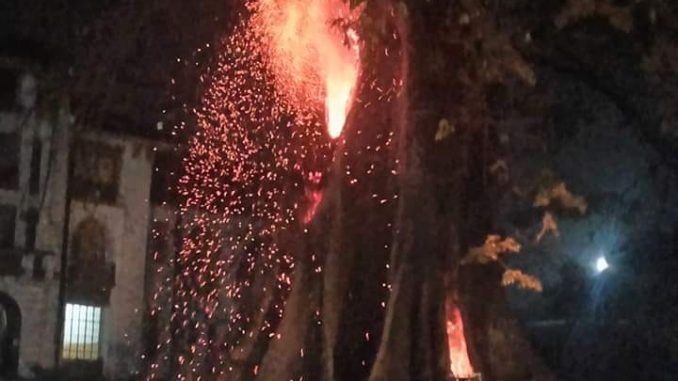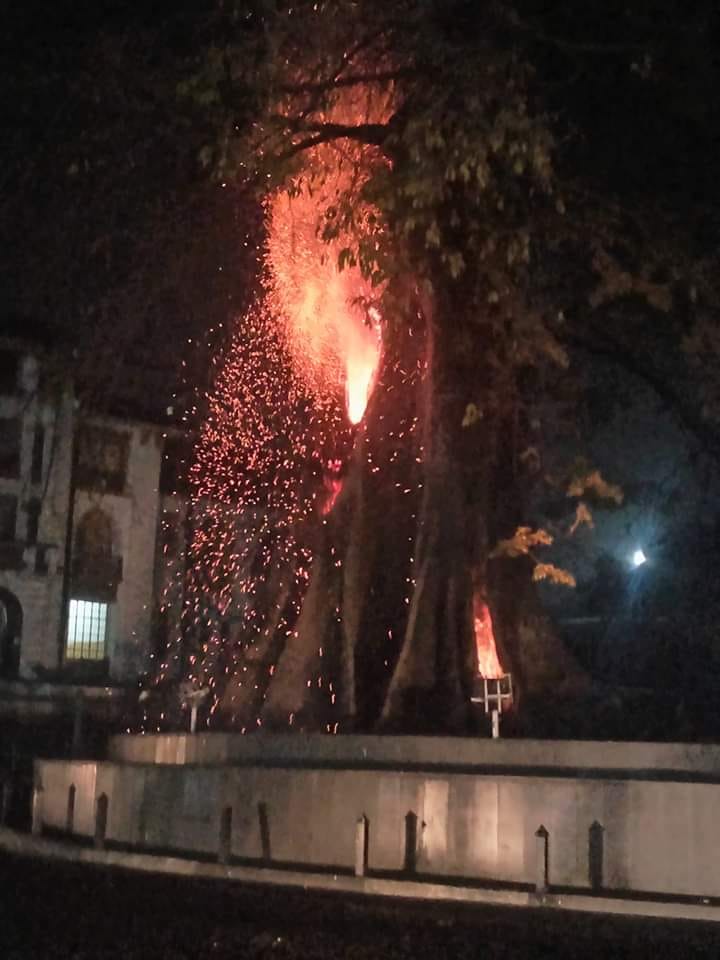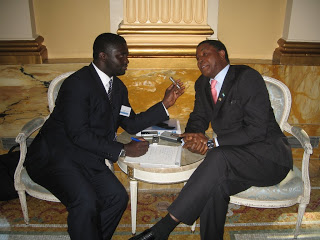
The historic Cotton Tree at the centre of Freetown was on fire last night.
The cause of the fire was unknown up to press time, but the news of the flames burning one of the most important historical relics in West Africa rattled the city.
Shortly after the fire was extinguished by the Freetown Fire Force, the Mayor of Freetown, Ms. Mayor Yvonne Aki-Sawyerr, published the following statement :
“Reports that Freetown’s historic Cotton Tree was on fire are true. The fire has been put out by the National Fire Force.
The cause of the fire remains unknown.
Mayor Yvonne Aki-Sawyerr, the Minister of Internal Affairs and the Office of National Security were at the scene.
FCC has called in a tree specialist to do an assessment of the damage to the tree tomorrow.”
Photo: Cotton Tree after the fire incident.
AFTER THE FIRE WAS EXTINGUISHED
COTTON TREE THIS MORNING
_________________________________________________
HOW HISTORIC IS THE COTTON TREE ?
The Cotton Tree is a Ceiba pentandra, also known commonly as a kapok tree, a historic symbol of Freetown, the capital city of Sierra Leone. According to legend, the “Cotton Tree” gained importance in 1792 when a group of former African American slaves, who had gained their freedom by fighting for the British during the American War of Independence, settled the site of modern Freetown. These Black Loyalist settlers, called “Nova Scotians” because they came from Nova Scotia after leaving the United States and before they decided to go back to Africa or, “Navatians” in Sierra Leone, founded Freetown on March 11th 1792.[1]
People first landed on the shoreline and walked up to a giant tree just above the bay and held a Thanksgiving service there, gathering around the tree in a large group and praying and singing hymns to thank God for their deliverance to a free land. Its exact age is unknown, but it is known to have existed in 1787.[2]
The tree is the oldest cotton tree in Freetown, Sierra Leone or possibly in the world. It stands near the Supreme Court building, music club building, and the National Museum. The tree has a lot of unique history. Under this tree is where the Nova Scotian settlers first prayed upon landing on the soil of Liberty and freedom, in other words to start their new lives as free people. They regard it as the symbol of their present situations during that period. Before these newly freed Africans arrived, Sierra Leone had already been inhabited. These newly arrived Africans gave the capital the name it bears today FREETOWN. Even today, Sierra Leoneans still pray and make offerings to their ancestors for peace and prosperity beneath the Cotton Tree.
From Wikipedia, the free encyclopedia






